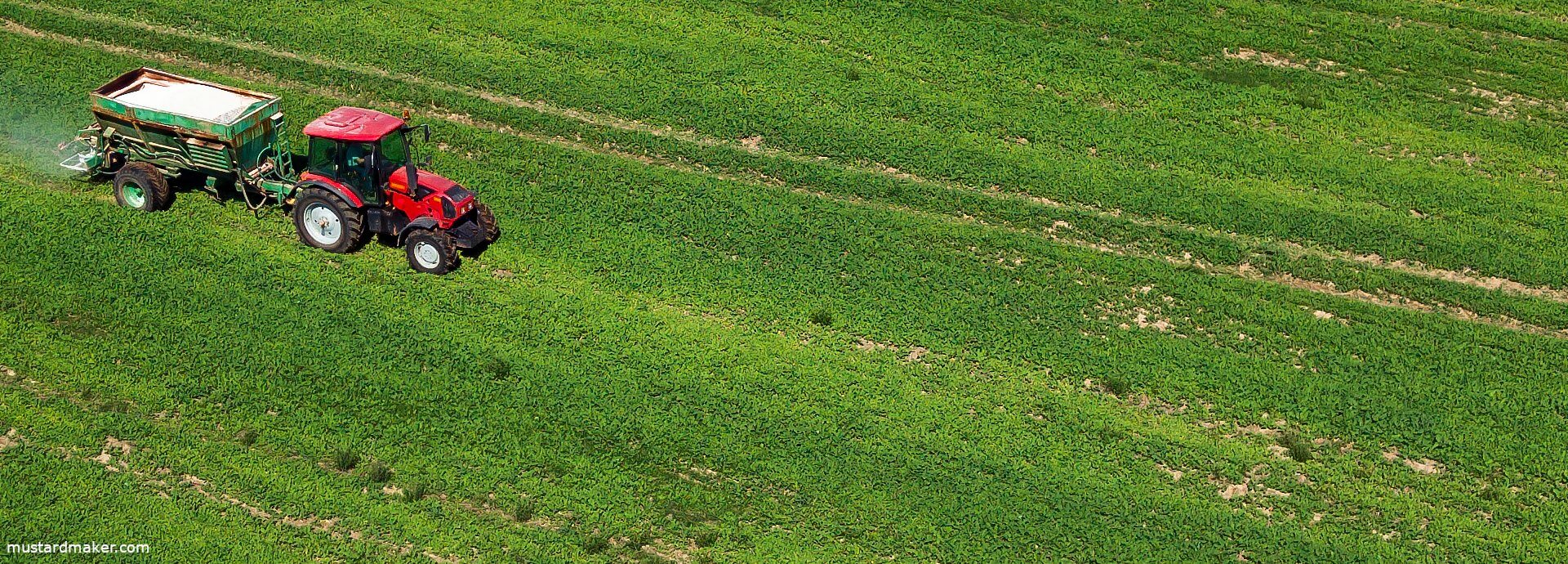Mustard as green manure
The green manure as cultivation of catch crops from organic farming recently acquires greater importance for agriculture. In the soil improvement measure, plants are sown extra as fertilizer and fresh or wilted into the soil, where they decompose after some time. The special feature is that the plants for green manuring are cut off just before flowering. The roots are left in the soil. The cuttings remain on the bed/field until reseeding. It serves as mulch material. Green manuring cannot completely replace other soil improvement measures.

Table of Contents
Mustard is suitable as an intercrop to improve the soil. The deep roots attract the soil structure. The plant carpet prevents soil leaching from precipitation on fallow land and curbs the growth of weeds. If mustard is sown as a green manure by the end of August, weed growth is effectively suppressed. Absorbed nutrients are released back into the soil by the mustard plant during green manuring. Mustard green manuring promotes the formation of humus.
When to sow green manure?
Mustard as green manure can be sown in any season. It is possible to plant the mustard plants for mustard green manure more densely than with 20 cm distance, so that a dense growth is created, which protects the soil. Water the green manure occasionally and cut the stems close to the ground at flowering time. The roots remain in the soil. Leave the clippings to continue protecting the soil. When you dig up the soil, work in the rotted plants. Alternatively, simply leave the plants in place for green manuring in the fall.
Is mustard hardy?
No, the leaves freeze at the first frost. In the spring you can dig up the foundation mustard. But with this method, mustard is likely to self-seed.
What mustard as green manure?
White mustard (Sinapis alba) or yellow mustard are used as deep-rooted green manure because mustard is fast-growing.
How fast does mustard grow?
The main growing season stretches over three months. It reaches a height of over one meter and more in a few weeks, depending on the location, and weeds hardly have a chance. Yellow mustard does not grow as high as other mustard varieties. However, weeds that have already grown tall do not overgrow mustard. It must be weeded by hand beforehand. Observe the crop rotation! Mustard can be used as a green manure if no cruciferous crops have been grown on the land for three years previously. Even up to three years after green manuring, no cruciferous plants may be cultivated on the area to avoid the transmission of diseases (cabbage hernia).
Advantages of mustard as green manure
Mustard is sown as green manure not only in the fall, but also directly after harvesting other vegetables between March and October. If the green manure is sown in April, it is dug up in early summer. Before digging up mustard, the plants must be dried to prevent them from re-growing. The mustard green manure acts as a natural long-term fertilizer to the soil. The incorporated plants are utilized by soil organisms, creating valuable humus. In heavy and compacted soils, the soil structure is loosened.
- protects against nematode infestation of beets, beet, chard, spinach
- positively influences the soil life of fungi and bacteria
- food source for butterfly and bees
Why not mustard in the vegetable garden?
Rather not, because with a green manure of mustard, rapeseed or cress suffers the plant health of cabbage vegetables and cruciferous vegetables For the vegetable patch are more suitable winter cereals or the all-rounder Phacelia, or they must refrain from sowing cruciferous vegetables after the green manure with mustard.